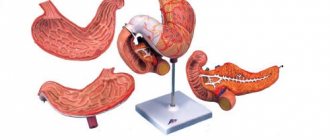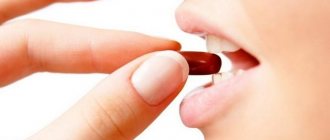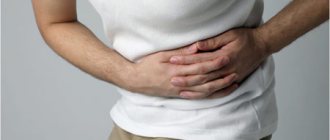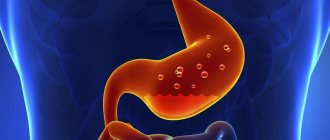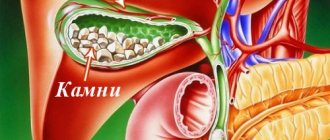When a mother hears the diagnosis that her baby has dysbiosis, she immediately asks questions about where and why this scourge came from. It must be said right away that this phenomenon is quite common and occurs in more than 90 percent of babies under the age of one year. Children who are most often exposed to dysbacteriosis are those who have weakened immune systems, were born before the normal stage of pregnancy, and often suffer from various diseases. What can be said about dysbiosis and how does it pose a danger?
Nature of bacteriosis
First of all, you need to understand the nature of this phenomenon. Dysbacteriosis, in short, is an imbalance of the intestinal microflora. Interestingly, according to WHO, such an imbalance is not considered a disease. And it is likely that precisely for this reason, in a number of European countries, such a condition is often not treated in any way, leaving it to the care of the body, which, as they believe, should solve this problem itself. However, many leading experts in this field believe otherwise. Why is such a “discord” possible at all? This and other things related to dysbacteriosis should be discussed in more detail.
As you know, before being born, the baby is in an ideal, so to speak, environment. It is surrounded by an absolutely sterile environment; there are no bacteria or microorganisms in the gastrointestinal tract. And only when it is born, making its first journey through the birth canal, the baby begins to comprehend for the first time the natural microflora of the mother, and in it, as the norm, there are E. coli, lacto- and bifidobacteria. Then “acquaintance” with various bacteria begins to occur, as they say at every step: when the baby sucks the breast, accepts hugs and kisses from the mother - after all, microorganisms are found in large quantities on the mother’s hands, skin, lips and mouth. This is how, step by step, the baby’s gastrointestinal tract acquires normal healthy microflora.
If the baby is in an ideal environment, feeding entirely on mother’s milk, then almost one hundred percent presence of probiotics or lacto- and bifidobacteria can be found in the intestinal microflora. And only a very small part is populated by “neutral” bacteria that bring neither benefit nor harm to the baby’s body. These can be streptococci, E. coli and others.
You need to know: The intestines of a newly born baby are sterile, bacteria begin to colonize in it after birth.
This is probably why doctors pay great attention to ensuring that maternal health is maintained at the proper level, hygiene is maintained during childbirth, and afterward the baby is given the opportunity to be with the mother and feed on breast milk. Microorganisms are especially active in colonizing the intestines and other places in the first three months of a baby’s life. It is during this period that hygiene and proper feeding of the baby are of great importance.
Causes of dysbiosis in an infant
In newborn babies, intestinal problems are more likely to occur due to a lack of beneficial bacteria. This is a transient dysbacteriosis - the colonization of bifidobacteria and the displacement of the pathogenic environment. The physiological process lasts from the moment of birth until 10-15 days of life.
In the first month of life, the gastrointestinal tract is just forming and stool upset or lack thereof, regurgitation, colic in a one-month-old baby are a consequence of the immaturity of the mucous membranes of the digestive organs.
Children under one year old suffer from dysbiosis for reasons such as:
- improperly selected nutrition - frequent changes in formula, early complementary feeding, abuse of dairy products for lactose intolerance;
- antibacterial therapy – after taking antibiotics, negative changes occur in the intestinal microflora, since the drugs have a detrimental effect not only on pathogenic microorganisms, but also on healthy bacteria;
- infectious diseases - rotavirus, salmonellosis, dysentery;
- helminth infestations , giardiasis.
The first cause of dysbiosis is unhealthy diet.
Important!
Dysbacteriosis in a breastfed child is much less common than when feeding formula. This is explained by the fact that with mother's milk the baby receives immunoglobulin and healthy microorganisms. The cause of watery stools, regurgitation and colic in the first 3-5 days is the presence of harmful cells in the body, which are replaced by healthy microflora within 7-10 days.
Microflora: what is it?
To better understand “dysbacteriosis” as a phenomenon, including in infants, you need to know that there are areas in the body that are sterile, for example, blood, as well as those where you can find a huge number of different microorganisms and bacteria - the oral cavity and nose, intestines and others. But these bacteria are not scary and are considered enemies for the body. However, on the condition that there will be no “strangers” among them - after all, each individual organism (which is especially important for infants) has its own set of bacteria, which makes up the microflora.
Bacteria that are part of the microflora contribute to better digestion of food and help suppress some unwanted bacteria. In addition, they take an active part in the synthesis of vitamins, as well as in most metabolic processes. Suffice it to say that more than three hundred types of “positive” bacteria live side by side in a baby’s intestines. It should be noted here that they can be influenced by various factors.
If, for example, diet, hormonal levels, as well as lifestyle change due to circumstances or some disease, then this has a significant impact on the microflora - it also changes. This is a normal process, and after a while the microflora will strive to adapt to new conditions, go through a period of adaptation, so to speak, and return to its previous – normal state.
Intestines of infants and their microflora
During the entire 9 months of his stay in his mother's womb, the child was in a completely sterile environment. Having been born, the child’s body has to face new conditions of existence and resist millions of new microbes that attack it from all sides and begin to populate its gastrointestinal tract.
As for the intestines of infants, it begins to be populated by microorganisms even at the time of labor, passing through the mother’s birth canal. And after the first feeding, various microorganisms enter the baby’s stomach, settle there and become its inhabitants. If the coexistence of the child’s body and the inhabitants of its housing complex occurs on mutually beneficial conditions, then this process is called symbiosis.
All microorganisms that populate the intestines of a newborn can be divided into 2 groups:
- Obligate flora, the presence of which is mandatory for normal digestion, stable immunity, absorption of vitamin D, calcium and other vitamins and microelements, stimulation of peristalsis and protection of the gastrointestinal tract from pathogenic microorganisms. This group includes beneficial lactobacilli, bifidobacteria, E. coli and saprophytic bacteria (completely useless).
- Optional flora, the presence of which is not mandatory. Moreover, under a number of unfavorable conditions (stress, nutritional errors, infections, etc.), these microorganisms begin to multiply and become pathogenic. This group also includes pathogenic staphylococci, Candida and Proteus yeasts, which can cause serious health problems (including dysbacteriosis, which must be treated).
Reading...
An infant has diarrhea: why is it dangerous and what should be done?
Additionally > How measles can be dangerous for a child and how to treat it
When there is an imbalance of microorganisms of the first and second groups, the protective functions of the child’s body decrease and dysbiosis may occur.
Dysbacteriosis in infants: symptoms and treatment
As has already become clear from the above, dysbiosis can be called a clear imbalance of intestinal microflora, which is inherent in a given person - an adult or a recently born baby. And the fact that the symptoms of dysbiosis in infants is nothing more than the result of any changes that have occurred in the body: changes in diet, room temperature, stress, illness and much more. When such circumstances are leveled, dysbacteriosis also goes away. Now it’s worth talking about how to recognize this unpleasant phenomenon.
Here are some characteristic signs when a baby has dysbiosis. Symptoms indicating a possible imbalance of intestinal microflora:
- the baby has visible bloating;
- “seething” occurs in the stomach due to increased gas formation;
- the baby is restless, signs of behavior indicate abdominal pain;
- there is a not entirely pleasant odor from the mouth;
- the baby suffers from increased salivation;
- the child feels dry skin;
- signs of allergic dermatitis appear;
- the presence of stomatitis and thrush;
- the appearance of constipation;
- long lasting – about three days diarrhea;
- the baby often vomits;
- the child does not eat well;
- the stool contains green mucus, foam, and streaks of blood;
- The baby hardly gains any weight.
Speaking about the stool of infants, it should be noted that for this age, yellow stools are normal, the consistency of which is similar to sour cream. A small amount of foamy mucus is also considered acceptable. In addition, whole pieces of food can be found in the stool of infants whose parents begin to feed them little by little.
We must not forget that the microflora should return to normal over time under one of two circumstances:
- the baby’s body will successfully adapt to the new environment;
- There will be no causes that caused certain disorders in the body, for example, illness or stress, as well as others.
In both the first and second variants, the better the microflora will return to normal when the intestines and digestive organs in general do not experience overload. In other words, by reducing the load on the baby’s digestive system (by keeping him, as they say, on a “starvation ration” during the period of getting used to new circumstances or during recovery from some illness), the microflora will recover faster.
It is believed that when there is no appetite in both an adult patient and a small child, this indicates that there is an active restructuring of the microflora to new conditions.
Causes
Intestinal dysbiosis occurs for many reasons. But it is believed that in most cases this occurs due to low immunity, which is caused by taking antibiotics, as a result of a long-term illness, nervous overload and other reasons. When unfavorable factors are created, and this, in addition to the reasons listed above, includes early weaning or a complete lack of nutrition with mother’s milk, an imbalance of the microflora occurs, which leads to such unpleasant consequences for the body that is not yet fully strengthened.
Reasons that can provoke dysbacteriosis in infants:
- various maternal health disorders during the period when the fetus was developing;
- there were birth pathologies;
- the baby spent a long time in the maternity hospital;
- as a result of intestinal infections of various nature and origin, as well as pustular and respiratory viral infections;
- insufficient physiological maturity of intestinal motility;
- disturbances in normal bowel function;
- as a consequence of primary immunodeficiency;
- the baby was put to the breast late;
- early transition to artificial nutrition or complete absence of breast milk;
- hormonal and anti-inflammatory drugs were forced to be used;
- taking antibiotics;
- as a result of surgical interventions;
- regular exposure of the baby to stressful and not entirely favorable social conditions.
Tests for dysbacteriosis
According to many modern pediatric doctors, there are great difficulties in establishing a diagnosis of “dysbacteriosis” not only for a child under one year old, but also for an adult patient, since today there are no effective ways to analyze the state of the microflora of the small intestine. According to the stool analysis, which is usually taken at a medical institution and seems to show a certain picture of what is happening in the baby’s intestines, it only shows what is happening in his feces. These are two completely different compositions of bacteria - in the intestines and in the feces of a child. And therefore, it is almost impossible to determine the exact functioning of the intestinal microflora. Why?
Because positive bacteria and microbes in the small intestine are localized near the walls and in this place the process of absorption of various substances into the blood occurs. Beneficial bacteria are very necessary for the body and they are firmly attached to the intestinal walls. While feces are formed in the center of the intestine and precisely from those substances and microorganisms that the child’s body wants to get rid of.
But this does not mean that stool analysis, when it comes to bacteria, is effective. It helps to identify pathogenic, dangerous and harmful bacteria. In other words, if a child is suspected of having a dangerous intestinal infection, for example, dysentery or salmonellosis, the doctor can quite accurately find out whether the baby is sick or not.
Nevertheless, analyzes should be carried out, techniques are improved, and certain experience is accumulated. And if there are any signs of the above symptoms of the development of dysbiosis, the baby will be prescribed an examination.
Tests for a baby may include:
- coprogram. This is a modern diagnostic method that allows you to identify the quality of food digestion in the intestines, as well as determine the presence or absence of inflammatory processes;
- stool seeding: 1. In the first case, opportunistic flora is examined, which makes it possible to identify the percentage of obligate bacteria, that is, when the quantitative indicators of healthy microflora are not taken into account; 2. A culture is carried out for dysbacteriosis, which reveals the percentage of two types of flora - corresponding to the norm and opportunistic, as well as sensitivity to antibiotics.
Mothers need to know that for subsequent tests it is necessary to collect fresh feces in a clean glass container within ten grams. It is not permissible to store it for a long time at room temperature. In the case where a child is treated with probiotics, they must be discontinued before taking the test.
Treatment of dysbiosis in infants
Some pediatricians believe that with the so-called dysbacteriosis, as well as with many other problems with bowel movements, when the baby is feeling normal, one should not rush to get rid of all these “troubles” with medications. It is not only desirable, but also necessary to wait them out - this, so to speak, is the only correct method of treatment. As a result, the body will be able to adapt to new circumstances and the system itself will return to normal.
As a rule, this adaptation takes from three to seven days. Unfortunately, in most cases, mothers do not want to wait, and are determined to immediately take care of their child’s problems, shopping for one or another remedy for dysbacteriosis. However, they, as a rule, do not bring sufficient effect, and at the same time do not pose any danger. And it turns out that the money goes down the drain, and the child’s body itself gradually returns to a state of normality - with the same result it would have achieved this without medications.
Treatment of dysbiosis in an infant should begin with the first symptoms, because when there are problems with digestion, the baby does not receive all the necessary substances, so it will begin to grow and develop worse, become sick, and have a tendency to allergic diseases. With this diagnosis of the disease in infants, you can resort to treatment with folk remedies. This treatment will be quite effective and safe.
What does traditional medicine offer? A decoction of the string is considered very useful and effective. The recipe for preparing it is not complicated: you will need two tablespoons of dry herbs of this plant to prepare the decoction. After which everything is poured with a decoction of boiling water. Your baby can take up to two tablespoons of the decoction three times a day. The course of treatment with a folk remedy is seven days. It is recommended to use a decoction of the string from the age of one month. Also used in the treatment of curdled milk, whey and a number of other fermented milk products.
But first, of course, you must visit a pediatrician and carefully monitor the baby’s condition. The doctor will give the necessary advice on how best to proceed in this situation and, if necessary, prescribe appropriate treatment.
If you have visited a pediatrician and he has identified intestinal dysbiosis in your child, you need to be prepared to undergo a fairly long and complex treatment.
The first stage will include treatment with bacteriophages. This is a group of viruses that are considered “tamed”. They have the unique property of destroying both pathogenic and opportunistic flora without harming beneficial bacteria. Together with intestinal antiseptics, sorbents will be prescribed as parallel treatment. This measure is aimed at helping the digestive system and is to quickly remove toxins from the body.
Second phase. Here, therapy is carried out to populate the intestines with beneficial microflora. For this purpose, the doctor prescribes special preparations containing lacto- and biphodobacteria. In order for your baby to be treated effectively and quickly, you must not resort to taking medications on your own, but strictly and strictly follow the pediatrician’s instructions.
As an additional measure, the doctor may prescribe various formulas that contain lactobacilli for bottle-fed babies. But in no case should such mixtures be given without a pediatrician’s prescription. It would be useful if babies who are on complementary foods have fermented milk products in their diet.
Necessary treatment methods - what are they?
Like the treatment of any other disease, in this case it should begin with finding out the cause of dysbiosis in infants. Treatment of dysbiosis occurs in any case, regardless of the form of the disease. It comes down to eliminating the causes of pathology and compensating the balance of intestinal microflora.
Reading...
What to do if you have otitis media in a child?
Additionally > An infant has diarrhea: why is it dangerous and what should be done?
As is known, maternal colostrum is a storehouse of protective factors during the development of its intestinal microflora and immune system. It contains bifidogenic factors that promote and create favorable conditions for the growth of bifidobacteria. Colostrum also contains immunoglobulins produced by the mother's body during her life in response to the diseases she suffered from. Thus, the baby with the mother's colostrum receives a kind of vaccination that will help him in the first year of life.
If breastfeeding is impossible for certain reasons, parents of infants need to be especially careful when choosing infant formula, giving preference to special adapted options enriched with live bacteria or prebiotics that promote the development of healthy microflora. The intake of such mixtures must be agreed with the pediatrician.
Treatment of dysbiosis at the first stage will be aimed at destroying and suppressing the growth of pathogenic microorganisms. For this purpose, it is advisable and more preferable to prescribe special immunopreparations - bacteriophages, which dissolve microbial cells. Another effective remedy in this case can be antibiotics or antiseptics.
After the successful completion of the first stage, the treatment proceeds to the second stage, which is aimed at populating the baby’s intestines with useful and healthy microflora, as well as promoting its growth. For this purpose, there are special probiotic preparations containing live microorganisms: lactobacilli, bifidobacteria and E. coli. Prebiotics contribute to their successful colonization, activation and reproduction. Also, the substances lactolose, fiber and oligosaccharides contained in prebiotics stimulate intestinal activity, which helps cope with constipation in an infant.
As for preventive measures for dysbiosis in newborns, you should think about them even at the stage of pregnancy planning . We are talking about timely detection and treatment of possible infections of the genital organs of the expectant mother.
Rate this article
Loading…
- Related Posts
- What is stomatitis, how it manifests itself and is treated in children
- Why does a child have a white coating on his tongue?
- How to help a small child if he is constipated
Достойные жрицы встречаются с приятными, чистоплотными мужчинами, лучшие индивидуалки Читы, яркий досуг и времяпровождение. На нашем сайте собраны анкеты лучших проституток города, которые готовы встретиться с вами прямо сейчас. Красивые лучшие индивидуалки Читы, сладкие и ухоженные, они такие весёлые и чуткие, что невозможно отказаться от удовольствия. Прелестницы ждут тебя.

